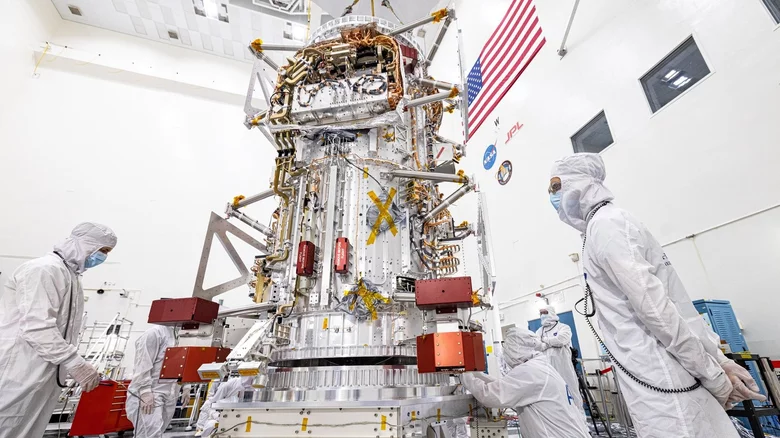In our solar system, one of the most exciting targets for future missions is not planets, but satellites. Europa Europa Europa has a thick ice shell, but scientists are very sure that there is a liquid ocean under its ice. This means that it may be livable and may be a good place to look for signs of life outside the earth This is why NASA is developing a spacecraft to visit Europa. The spacecraft, called Europa clipper, will be launched in 2024

However, it is not easy to study such a distant object. Europa is distant and cold, and the potential ocean of great interest to scientists lies 10 to 15 miles under the ice. To study this strange world, Europa clipper will be equipped with nine scientific instruments, including a spectrometer and a thermal imager. These instruments will enable spacecraft to record information about Europa's ice surface, its mysterious interior and its atmosphere. Taken together, these readings should allow scientists to measure the depth and salinity of their oceans, as well as the thickness of the ice crust more accurately.
Another useful feature that scientists want to study is a column of water that may be ejected from below the earth's crust and onto the surface. Europa generates heat under the action of gravity, which pulls Europa around and warms its interior. This heat (not from the distant sun) prevents the water under its surface from freezing. These same forces may produce water columns and even help to mix the ocean below the surface and cycle the chemicals that are important to life, such as carbon, hydrogen and oxygen.
The main body of Europa clipper is 10 feet high and 5 feet wide; It is a cylinder made of aluminum and can accommodate key components such as electronic and radio systems. NASA's Jet Propulsion Laboratory (JPL) said that when fully completed, it will be as big as an SUV, and when its solar panels are deployed, it will be as big as a basketball court.
In addition to spacecraft systems and instruments, another key part is the array of 24 engines, which will enable Europa clipper to travel in space during its 1.8 billion mile journey. "Our engine has a dual purpose," explains Tim Larson, JPL's deputy project manager. "We use them for large maneuvers, including when we are close to Jupiter and need a lot of combustion to be captured in Jupiter's orbit. But they are also designed for small maneuvers to manage the attitude of spacecraft and fine tune the precise flight over Europa and other solar system objects along the way."
In June, 2022, JPL announced that it had received the main body of the spacecraft at its facility in Southern California. JPL engineers will now set about installing and testing spacecraft instruments, as well as installing other key components before the final test of the spacecraft before launch. "This is an exciting moment and a huge milestone for the entire project team," said Jordan Evans, JPL mission project manager. "This delivery brings us one step closer to launch and Europa clipper scientific investigation."